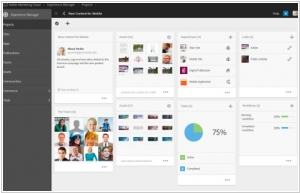Adobe Experience Manager vs WordPress
May 17, 2023 | Author: Michael Stromann
49

WordPress is web software you can use to create a beautiful website or blog. We like to say that WordPress is both free and priceless at the same time. The core software is built by hundreds of community volunteers, and when you’re ready for more there are thousands of plugins and themes available to transform your site into almost anything you can imagine.
Adobe Experience Manager (AEM) and WordPress are both popular content management systems, but they cater to different needs and target different user bases. AEM is a powerful enterprise-level platform developed by Adobe, designed to handle complex content management requirements and provide extensive customization capabilities. It excels in managing large-scale websites, delivering personalized experiences, and integrating with other Adobe marketing tools. WordPress, on the other hand, is a widely-used open-source platform that offers a user-friendly interface and a vast ecosystem of plugins and themes. It is popular among individuals, small businesses, and bloggers, providing an intuitive content creation experience and a wide range of customizable options.
See also: Top 10 Enterprise Portals
See also: Top 10 Enterprise Portals
Adobe Experience Manager vs WordPress in our news:
2023. Automattic launches an AI writing assistant for WordPress
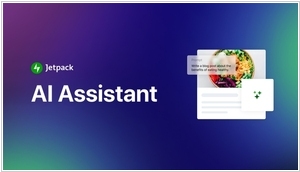
Automattic has introduced an AI assistant for the widely used content management system Wordpress.com. Now, when composing a post or page, users have the option to incorporate an "AI Assistant" block into their content. By inputting prompts in natural language, users can avail themselves of the AI assistant's text generation capabilities. Beyond providing content suggestions, the AI assistant can facilitate the creation of organized lists and tables within blog posts. Additionally, it has the ability to adjust the tone of a post, adding elements of informality, skepticism, humor, confidence, or empathy. The assistant can also generate post summaries and propose suitable titles. Initially, the Jetpack AI Assistant block offers a complimentary trial allowing users to submit 20 requests. Subsequently, a subscription fee of $10 per month is required to access this feature.
2021. Automattic acquires analytics company Parse.ly

Automattic, the profit-making company associated with the open-source web publishing platform WordPress, has recently completed the acquisition of the analytics provider Parse.ly. Parse.ly equips creators, marketers, and developers with tools to gain insights into content performance, demonstrate its value, and deliver personalized content experiences that yield meaningful outcomes. While WordPress and Parse.ly already exhibit compatibility, the objective is to enable Parse.ly customers to access WPVIP features (enterprise hosting and support for publishers) and enhance the availability of Parse.ly data to WPVIP publishers. Additionally, there exists potential to incorporate more commerce-related data into Parse.ly, considering Automattic's ownership of WooCommerce.
2020. Adobe Experience Manager now offered as cloud-native SaaS application
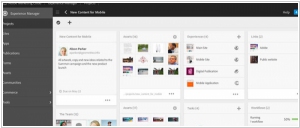
Adobe Experience Manager has introduced a cloud-native Software as a Service (SaaS) application. Previously, it was available as an on-premises solution or a managed service, but it lacked the pure cloud-native architecture. The availability of AEM as a cloud service brings significant benefits to customers, providing the same value as any other cloud service. With this new offering, customers can now utilize all the features and tools of AEM without the burden of maintenance, management, or updates. This enhances flexibility, agility, and continuous access to the latest updates for the marketing team. AEM offers a range of capabilities, including real-time customer experience management. Real-time access to data enables the delivery of products, services, and experiences tailored to the specific needs of each customer at any given moment.
2016. WordPress.com turned on HTTPS encryption for all sites
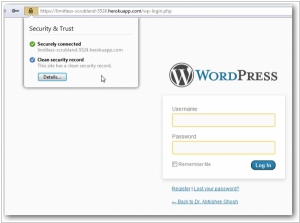
WordPress.com is implementing automatic HTTPS support for all its sites, requiring no user action. Each website is now equipped with an SSL certificate, which is indicated by a green lock in the address bar. Besides the heightened security, this improvement has the added benefit of Google's preference for HTTPS-supported websites over those limited to HTTP. Consequently, your WordPress.com website is expected to achieve higher rankings in Google search results.
2015. WordPress.com goes Open Source and gets a desktop app

The fully hosted version of WordPress, known as WordPress.com, has recently undergone a significant update. The first major change is the complete separation of WordPress.com from the WordPress core. It now functions as an admin interface that interacts with the WordPress core similar to other third-party interfaces and apps. This is achieved through the utilization of a REST API, enabling tasks such as fetching posts, publishing new content, and uploading photos. Secondly, the WordPress.com development team has transitioned to an entirely new stack. Instead of relying on PHP and MySQL, they have built the platform using JavaScript and API calls. Consequently, when accessing the website, the server distributes a fully functional WordPress client that primarily runs within the user's browser. Lastly, the entire system is open source and hosted on GitHub. Additionally, a new Mac app is available for download, offering an alternative way to access WordPress.com. Similar to the Slack desktop app, it harnesses web technologies and desktop features to provide users with a comparable experience to the WordPress.com website, along with extra features like notifications. Windows and Linux apps are currently in progress and will be released in the future.
2015. WordPress acquired e-commerce plugin WooCommerce

Automattic, the company responsible for WordPress, has made an acquisition by acquiring WooCommerce, the developer of a highly popular e-commerce WordPress plugin. This plugin enables website owners to effortlessly transform their self-hosted WordPress sites into fully functional online stores. With a staggering presence in the online store landscape, WooCommerce powers a substantial number of over 650,000 online stores. While WooCommerce offers user-friendly features, especially compared to other e-commerce solutions, it still requires some assistance during the initial setup process. The demand for easy-to-use shopping solutions is increasingly becoming a key selling point for web-based platforms. Competitors of WordPress.com, such as Squarespace, have integrated storefront modules, and other companies like Shopify, Big Cartel, and Bigcommerce offer hosted solutions to cater to this growing market.
2014. WordPress, Squarespace offer website CMS for Google Apps customers

Website CMS providers, WordPress and Squarespace, have recently become part of the Google for Work Partner Program, offering users access to two highly flexible content management systems (CMS) tailored for small businesses. The Google for Work Partner Program already includes website building services such as Wix, Weebly, and Bluehost. The program's core services encompass popular tools like Gmail, Hangouts, Calendar, Google+, Drive, Docs, Sheets, Forms, Slides, Sites, Admin, and Vault. The integration of Squarespace and WordPress with Google for Work provides users with user-friendly content management solutions, efficiently addressing their daily requirements. Furthermore, the integration process with these platforms is made simple through the availability of APIs, enabling seamless incorporation of Google Apps into their interfaces.
2014. Microsoft makes scaling WordPress on Azure easier
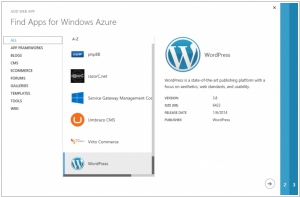
WordPress is widely recognized as one of the leading web content management systems for the Enterprise. However, when it comes to scaling up for high-traffic websites, it can pose challenges. To address this, Microsoft has been providing the option to effortlessly establish a WordPress site using Azure Websites. Now, Microsoft takes it a step further by introducing a highly scalable solution. Azure users can navigate to Azure's App Gallery and deploy what Microsoft refers to as "Scalable WordPress." This process involves a few simple clicks, setting up Azure Storage to store all media assets, and granting access to a curated collection of performance-optimized WordPress plugins. Unlike the standard WordPress installations on Azure, this solution utilizes a higher-end (and pricier) MySQL database. WP Engine and Pantheon are among the recent entrants in offering specialized WordPress hosting services. Unlike Azure, these platforms provide a fully managed service. Nonetheless, Microsoft aims to attract businesses that are capable and willing to manage their own WordPress installations by simplifying the setup of a scalable version on its platform.
2009. Adobe LiveCycle ES goes to the Cloud
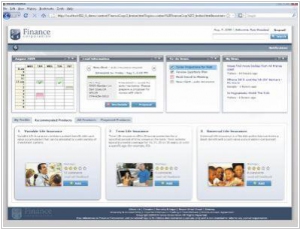
Adobe has announced the new "cloud" version of its ECM system Adobe LiveCycle ES. It can be hosted on Amazon Web Services platform. Adobe also offers own hosting service for LiveCycle ES including 24/7 maintenance and support. The new version LiveCycle ES 2 features two new modules: LiveCycle Mosaic and LiveCycle Workspace ES 2 Mobile. The first is for the building internal portals - rich personalized interfaces that provide access to the data stored in LiveCycle ES in the form of widget "mosaic". The second - provides mobile access to the system on iPhone, BlackBerry and Windows Mobile. Besides, users can access the system via browser using Flash, AIR desktop client or directly from a PDF document (opened in Adobe Reader). ***
2009. Adobe's LiveCycle Powered by Amazon
There is a perception among many readers that Amazon Web Services (AWS) is not fully equipped for enterprise-level use, and Amazon needs to partner with more companies that focus on enterprise application development. On the other hand, Adobe aims to persuade developers who are fond of AWS to consider building business applications using its LiveCycle platform. In line with this objective, Adobe has announced that LiveCycle will be powered by AWS, specifically by deploying a Red Hat JBoss J2EE stack on AWS and running LiveCycle on top of it. This integration simplifies the prototyping, development, and testing process, potentially attracting more developers to the Adobe LiveCycle platform. While AWS may not be the ideal deployment platform for the write-intensive and transactional applications typically developed on LiveCycle, Adobe clarifies that the current focus is on utilizing AWS as a development and testing platform. This gradual approach aligns with typical enterprise practices. LiveCycle, which has been available for five years, offers features such as Business Process Management (BPM), leveraging Adobe AIR and Flex to provide rich internet and mobile capabilities. Adobe demonstrates the potential of LiveCycle through a demo showcasing an insurance claims process for a car accident. The integration of LiveCycle with AWS allows for faster prototyping, development, and testing cycles, enabling developers to quickly engage with the platform and generate revenue. The combination of Adobe's expertise in document management and the importance of dynamic BPM, which necessitates adaptable processes in response to real-world situations, positions LiveCycle on AWS as a compelling proposition. The article concludes by inviting readers to share their thoughts on LiveCycle and whether they would consider using it now that it is available on AWS.

